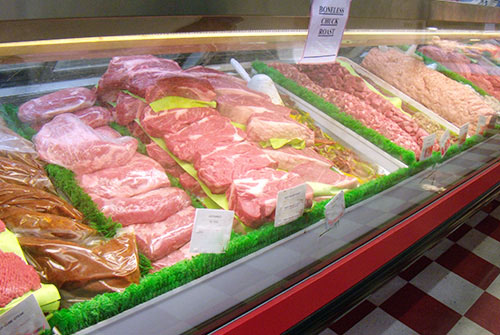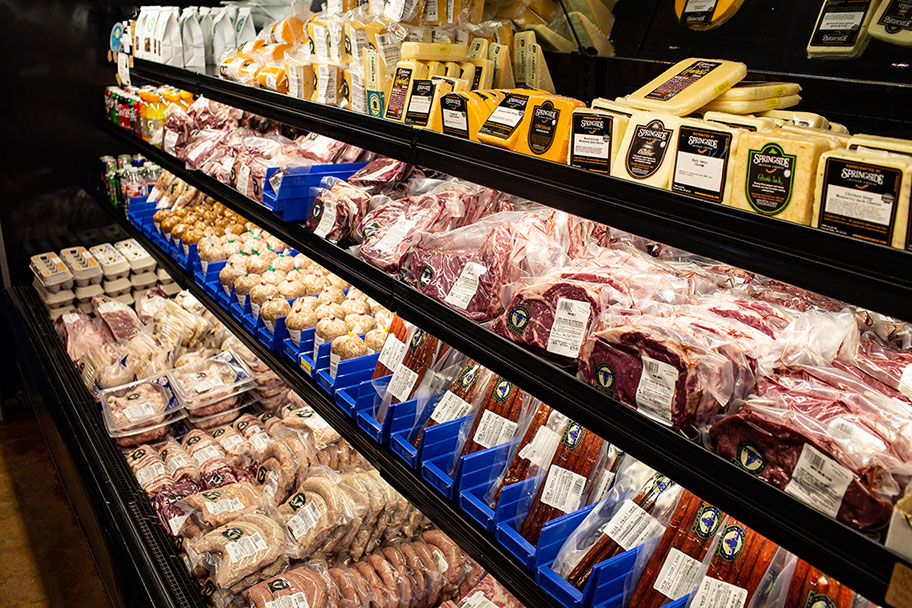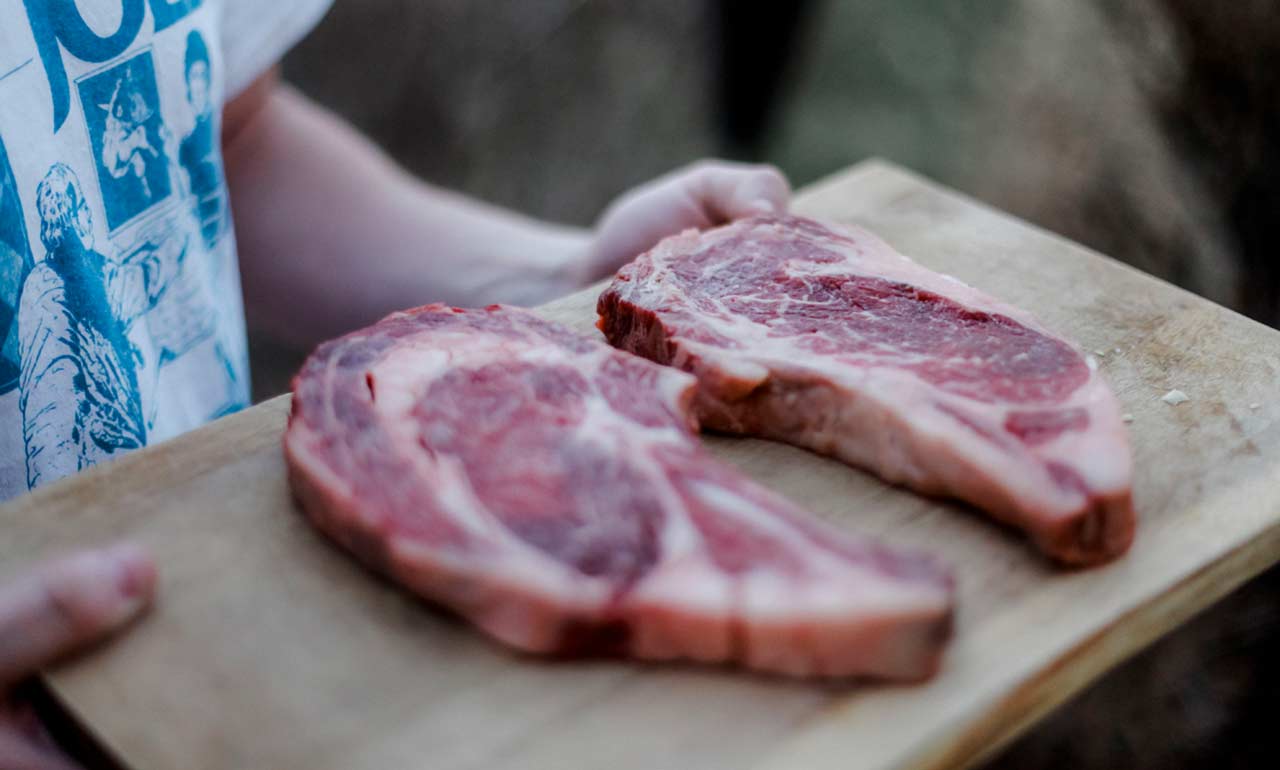Why Locals Love Bagley Farms Meat Market Edwardsville IL for Their Meat Purchasing
Why Locals Love Bagley Farms Meat Market Edwardsville IL for Their Meat Purchasing
Blog Article
Discover the Art of the Butcher's Cut in a Modern Meat Market
In the ever-evolving landscape of modern meat markets, the butcher's cut has transcended its typical origins, combining age-old workmanship with modern methods. What genuinely establishes the modern butcher apart is their capability to create a deeper connection in between consumers and the beginnings of their meat.
Development of Butchery Strategies

The mid-20th century saw butchery techniques even more improved by scientific insights right into muscular tissue biology and meat aging, enhancing both tenderness and taste. Developments like vacuum cleaner product packaging and refrigeration prolonged product shelf-life, allowing butchers to expand offerings and enhance quality control. This duration likewise noted the rise of specific devices, such as band saws and meat slicers, which boosted precision and performance in meat handling.
Electronic systems now help in monitoring pet provenance and enhancing cuts to meet specific customer preferences. In addition, a renewal in artisanal butchery has actually emerged, mixing conventional abilities with modern understanding to provide to consumers looking for moral and lasting meat alternatives.

Recognizing Meat Cuts

Comprehending the details of meat cuts is necessary for both butchers and customers seeking high quality and worth. Each cut comes from a different part of the pet, imparting distinct flavors, structures, and food preparation approaches. Mastery of these differences not just improves cooking experiences however additionally optimizes the energy of each carcass. For butchers, accurate cuts mirror skill and regard for the craft, making sure very little waste and optimal return.
The key categories of meat cuts consist of primitive, sub-primal, and retail cuts. Primal cuts, such as the loin, rib, and chuck, are the big sections at first divided from the carcass. Butchers then damage these down better right into sub-primal cuts, prior to finally producing retail cuts offered to customers, like ribeye or tenderloin. Each stage calls for careful interest to physiological structure and muscle mass structure.
Recognizing muscular tissue composition is important; muscular tissues used extra often by the animal have a tendency to be harder and are best fit for slow-moving food preparation techniques, while less-used muscles, like those found in the loin, are a lot more tender and ideal for cooking or roasting. Experience with these distinctions equips consumers to make educated selections, improving their cooking endeavors.
Choosing Top Quality Meat
Selecting the right meat includes more than simply selecting a visually enticing piece from the screen. The art of picking high quality meat requires a discerning eye and knowledge of certain attributes that indicate quality and excellence.
Secondly, consider the marbling, which describes the white flecks of fat within the muscle mass. Proper marbling is a key sign of tenderness and flavor, as it melts during cooking, enhancing the meat's juiciness. Remember, greater marbling usually associates with premium top quality cuts, such as USDA Prime.
Structure is one more crucial blog variable; meat needs to really feel strong to the touch, not slimed or excessively soft. In addition, bear in mind the aroma. Fresh meat should have a clean, neutral scent, without any type of sour or repulsive smells.
Matching Cuts With Cooking Techniques
Efficiently matching cuts of meat with the proper food preparation approaches is essential for accomplishing ideal taste and structure. Various cuts vary in tenderness, marbling, and connective tissue web content, each calling for certain techniques to open their capacity. For instance, tender cuts like filet mignon and ribeye, with their fundamental marbling, take advantage of high-heat, quick-cooking techniques such as grilling or pan-searing. These approaches boost the meat's natural tastes and guarantee a juicy coating.
Alternatively, tougher cuts like brisket and chuck roast are abundant in collagen, which breaks down right into jelly when cooked gradually. These cuts are perfect for braising or slow-moving roasting, permitting the meat to tenderize gradually and develop deep, intricate flavors. Cuts such as brief ribs and pork shoulder fare well with slow-cooking methods, where extended cooking times change their durable appearances into succulent meals.
Lamb shanks and oxtail, which need long term cooking to tenderize, are ideal prospects for cooking or sluggish simmering. These methods coax out rich, hearty flavors while maintaining moisture. By recognizing the distinct qualities informative post of each cut, cooks and home cooks alike can elevate their culinary productions, making certain each recipe is both satisfying and memorable.
The Butcher's Duty Today
Browsing the progressing landscape of the modern meat market, the resource butcher's duty today prolongs past plain preparation of cuts. Contemporary butchers are culinary craftsmens, educators, and advocates for lasting methods.
Along with crafting accurate cuts, butchers now involve straight with consumers, providing cooking suggestions and tailoring selections to match specific demands and choices. Their expertise in meat aging, marbling, and flavor profiles empowers consumers to make educated choices, enhancing their cooking experiences. This customized solution exhibits the butcher's progressing role as a trusted consultant in the kitchen.
Furthermore, butchers are essential in lessening waste, using entire animals to create diverse items such as sausages and stocks - bagley farms meat market edwardsville il. This extensive approach not just respects the pet but likewise aligns with contemporary sustainability objectives. By doing this, the contemporary butcher personifies both practice and technology, adjusting to an ever-changing market while maintaining the virtuosity and integrity of their craft

Verdict
Proficiency in comprehending varied meat cuts and high quality signs empowers butchers to provide enlightened suggestions, aligning certain cuts with optimum cooking approaches. By recognizing historical techniques while welcoming modern needs, the butcher's duty continues to be important in today's advanced meat market.
Report this page